
May 16
1717 France: Voltaire (Francois-Marie Arouet) is imprisoned in the Bastille:
Voltaire was born to middle-class parents, attended college in Paris, and began to study law. However, he quit law to become a playwright and made a name for himself with classical tragedies. Critics embraced his epic poem, La Henriade, but its satirical attack on politics and religion infuriated the government, and Voltaire was arrested in 1717. He spent nearly a year in the Bastille.
Voltaire's time in prison failed to dry up his satirical pen. In 1726, he was forced to flee to England. He returned several years later and continued to write plays. In 1734, his Lettres Philosophiques criticized established religions and political institutions, and he was forced to flee again. He retreated to the region of Champagne . . . . In 1750, he moved to Berlin on the invitation of Frederick II of Prussia, and later settled in Switzerland, where he wrote his best-known work, Candide. He died in Paris in 1778, having returned to supervise the production of one of his plays.
[In case you are wondering why this is included, there are at least two reasons. First, that his attacks on the Ancient Régime in France was no doubt, a factor in the causes of the French Revolution. Secondly, there was his uneasy friendship with Frederick the Great, of Prussia. Frederick also changed the course of European history from his time on. But he was not liable for the fact that Hitler had his portrait in his room.—Ed.]
1770 France: Louis (the Dauphin) marries Marie Antoinette:
At Versailles, Louis, the French dauphin, marries Marie Antoinette, the daughter of Austrian Archduchess Maria Theresa and Holy Roman Emperor Francis I. France hoped their marriage would strengthen its alliance with Austria, its longtime enemy. In 1774, with the death of King Louis XV, Louis and Marie were crowned king and queen of France. [For further details, Click here.]
[The indifference of Louis XVI to the welfare of his people brought about the French Revolution.—Ed.]
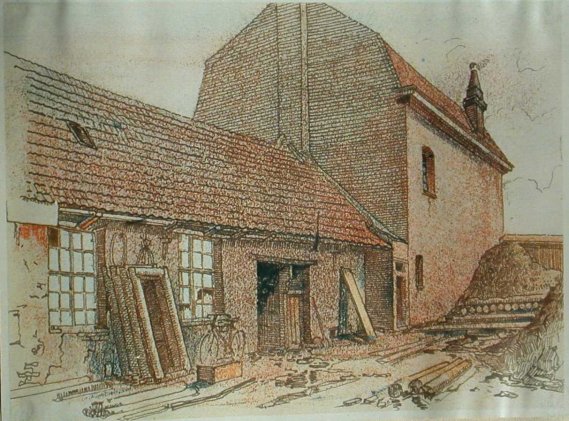
Fromelles Watercolor, 1915, by Hitler
1915 World War I: List Regiment: Gefreiter Adolf Hitler's 16 Reserve Infantry Regiment occupy a position, at Fromelles, which is on a level field with water channels, willow trees and willow stalks, in the distance towards the enemy lines lie an insignificant wood with barbed wire entanglements. Under the direction of their defense-minded commander, Lieutenant General Gustav Scanzoni von Lichtenfels, the regiment works ceaselessly day and night to further fortify their position at Fromelles while fighting off repeated assaults by the enemy. [For further details, Click here.]
1916 World War I: Various:
The Sykes-Picot Agreement is reached—dividing the Middle East into areas of influence for Britain and France (among others). The agreement assigns control over modern Syria and Lebanon to France. Much of the geographical area known as Palestine is to remain under international control. The agreement does, however, make mention of the possibility of cession of land to an Arab state.
List Regiment: Gefreiter Adolf Hitler endures trench warfare in Flanders (Artois) with 3 Company, 16 Reserve Infantry Regiment. [For further details, Click here.]
1917 World War I: Various:
Kerensky becomes Minister of War:
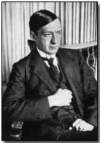
It is Kerensky's persistence in fighting the war, that dooms the provisional government. Led by Lenin, the Bolsheviks continue to undermine the war effort by spreading communist propaganda among the soldiers and the working class.
List Regiment: Gefreiter Adolf Hitler's 16th RIR act as flank-cover for a division sent to recapture Roeux, which lies between Arras and Bullecourt. From the official regimental history:
At 4:40 AM . . . the 38th Division advanced in an assault on Roeux . . . . Our regiment covered the right flank [but] the attack by the division broke down. At 9 o'clock the English massed a counter-attack [which] was repulsed. [For further details, Click here.]
1918 World War I: Various:
U.S. Congress passes the Sedition Act:
The Sedition Act was passed in the United States, forbidding Americans from using "disloyal, profane, scurrilous, or abusive language" about the United States government, flag, or armed forces during the ongoing World War I. [For further details, Click here.]
List Regiment: The 16th RIR is sent back behind the lines for ten days rest. Gefreiter Adolf Hitler is awarded a regimental citation for "outstanding gallantry" at Fountaine, and a Wounded Badge (Category Black).
[See: Was Adolf Hitler a 'War Hero' in World War I?]1934 Countdown to Infamy: From a memorandum by Secretary of State Hull regarding a conversation with Japanese Ambassador Saito:
I remarked that we were living in a highly civilized age, and that my country, for example, was exerting every effort as rapidly as possible to condemn, repudiate, and discard any and every practice, policy; or utterance that might be reasonably calculated to give just or reasonable grounds of complaint to any other people. [For the full text, Click here.]
[See: Countdown to Infamy: Timeline to Pearl Harbor.]1935 The Czecho-Soviet Pact of Mutual Assistance is signed.
1940 World War II: Various:
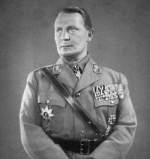
War in the Air: Goering's special train is parked at a railroad siding near the French border. He will direct the air war against France from this location. (THP)

Genocide: Gypsies: The first deportations of German Gypsies begin. Chosen for the first roundup are some 2,800 men, women, and children living in and around cities in western and northwestern Germany. Their ultimate destination is Poland. No more deportations of Gypsies will occur until late 1941. (THP)
Countdown to Infamy: From a Memorandum by Secretary of State Hull regarding a conversation with Japanese Ambassador Horinouchi:
The Ambassador then made some reference to the Monroe Doctrine in connection with the West Indies situation, and I replied that I had seemingly in vain sought to point out to his Government that, under the Monroe Doctrine, his country's merchant ships have equal access to every harbor in the Western Hemisphere (not including a special arrangement between the United States and Cuba), while under the policy which his Government is seeking to impose in the Pacific Ocean area, the United States and other countries are to be denied equality of trade and industrial opportunity in every Chinese port, and yet his Government seems to look with complacency on this conflicting situation. [For the full text, Click here.]
1941 World War II: Various:
Rudolf Hess: Prime Minister Churchill's Personal Minute, Serial No. M550/1:
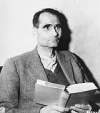
I approved the War Office proposal to bring Hess to the Tower by tonight pending his place of confinement being prepared at Aldershot. His treatment will become less indulgent as time goes on. There need be no hurry about interviewing him, and I wish to be informed before any visitors are allowed. He is to be kept in the strictest seclusion, and those in charge of him should refrain from conversation. The public will not stand any pampering except for intelligence purposes with this notorious war criminal.
From The Unseen War in Europe: Espionage and Conspiracy in the Second World War by John H. Waller:
Rudolf Hess's strange flight to Scotland, on May 10, 1941, reinforced Stalin's conviction that the British and Germans were about to gang up on him. According to the Russian historian A. M. Nekrich, writing just before Hitler's invasion of Russia, Stalin was certain that Britain not only was aware of the impending invasion, but "was inciting Germany to attack the USSR; that secret negotiations were taking place in London with Rudolf Hess." Given this distorted assumption, it is little wonder that the Soviet dictator considered Churchill's warnings "a British provocation." Soviet spy Kim Philby in one of his reports to Moscow claimed that Hess "had brought peace offers." Philby also quoted Hess as saying, "Germany has certain demands of Russia, which would have to be satisfied either by direct negotiations or as a result of war."
The NKVD scrambled to confirm Philby's reports and produced information that drew the disturbing conclusion that Hess's flight had not been the act of a deranged man, as some in Britain were claiming but was symptomatic of "a Nazi conspiracy to reach a peace agreement with Britain before attacking the Soviet Union." . . . . Philby's reporting to his Soviet masters disclosed that before Hess's flight a letter from him to the Duke of Hamilton was "intercepted by the British counter-intelligence service." Assuming Stalin heard this from such high-level NKVD penetrations of the British, we should not find it surprising that he leaped to the conclusion that the Hess flight was part of a British-German conspiracy rather than simply a British Secret Service provocation sting.
Iceland: Parliament denounces a treaty with Denmark and proclaims independence, one day after Denmark had capitulated to the Nazis.
[See: War Below Zero.]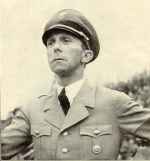
Barbarossa: Goebbels writes in his diary, "Things are due to roll in the East on May 22, dependent on the weather." (THP)
[See: What Were Adolf Hitler's Major Blunders?]1943 Various:
Death: Alfred Hoche: German psychiatrist, well-known for his writings about eugenics and euthanasia. Binding and Hoche's book, along with those by Alfred Ploetz, Rupp and Jost, directly influenced the Nazi T-4 Euthanasia Program of the 1930s. Hoche postulated "that perhaps one day we will come to the conclusion that the disposal of the mentally dead is not criminally or morally wrong, but a useful act." Hoche argued that the state can be seen "as an organism, as a human body which—as every doctor knows—in the interests of the survival of the whole, gives up or discards parts which have become valueless or damaging." The mentally ill were those who were valueless and were to be discarded. Hoche believed his ideas would be widely accepted, only after "a change in consciousness, a realization of the unimportance of a single person's existence, compared to that of the entirety . . . the absolute duty of bringing together all available energy, and the feeling of belonging to a greater undertaking." Arguably, this was to take place much faster than even Hoche had expected; a little more than a decade later, his ideas became part of German (Nazi) law.
World War II (May 16-17): The RAF launches Operation Chastise (The Dam Busters):
The Royal Air Force sets into motion a plan to bomb key dams, in order to flood the Ruhr region of Germany
Operation Chastise, part of a larger strategy of "area bombing" begun a year earlier was led by Guy Gibson, one of the RAF's best bomber pilots. Leading 18 bombers at low altitude across the North Sea and Holland, Gibson lost six bombers and 56 of his crew (out of 133) who were shot down before reaching their destinations, the Mohne, Eder, and Sorpe dams. The surviving aircraft succeeded in destroying two of their three targets, causing the Ruhr river, a tributary of the Rhine, to flood the surrounding area, killing 1,268 people, including, unfortunately, 700 Russian slave laborers. Gibson would be awarded the Victoria Cross for his successful, though costly, raid.
Germans launch Operation Gypsy Baron:
The German army went on the offensive against partisan resistance fighters who controlled large tracts of swampland, forest, and mountain ranges and were still battling the German invaders on the eastern front in Russia. Out of 6,000 partisans in the region, German bombing killed 1,584 and another 1,568 were taken prisoner. Bombs were not the only things that fell from the sky; the Germans dropped 840,000 leaflets calling for the surrender of the partisans.
Warsaw Ghetto uprising ends:
In Poland, the Warsaw Ghetto uprising comes to an end as Nazi soldiers gain control of Warsaw's Jewish ghetto, blowing up the last remaining synagogue and beginning the mass deportation of the ghetto's remaining dwellers to the Treblinka extermination camp.
Shortly after the German occupation of Poland began, the Nazis forced the city's Jewish citizens into a "ghetto" surrounded by barbed wire and armed SS guards. The Warsaw Ghetto had an area of only 840 acres but soon held almost 500,000 Jews in deplorable conditions. Disease and starvation killed thousands every month, and beginning in July 1942, 6,000 Jews a day were transferred to the Treblinka concentration camp. Although the Nazis assured the remaining Jews that their relatives and friends were being sent to work camps, word soon reached the ghetto that deportation to the camp meant extermination. An underground resistance group was established in the ghetto—the Jewish Combat Organization (ZOB)—and limited arms were acquired at great cost.
On January 18, 1943, when the Nazis entered the ghetto to prepare a group for transfer, a ZOB unit ambushed them. Fighting lasted for several days, and a number of Germans soldiers were killed before they withdrew. On April 19, Nazi leader Heinrich Himmler announced that the ghetto was to be cleared out in honor of Hitler's birthday the following day, and more than 1,000 SS soldiers entered the confines with tanks and heavy artillery. Although many of the ghetto's remaining 60,000 Jewish dwellers attempted to hide themselves in secret bunkers, more than 1,000 ZOB members met the Germans with gunfire and homemade bombs. Suffering moderate casualties, the Germans initially withdrew but soon returned, and on April 24 they launched an all-out attack against the Warsaw Jews. Thousands were slaughtered as the Germans systematically moved down the ghetto, blowing up buildings one by one. The ZOB took to the sewers to continue the fight, but on May 8 their command bunker fell to the Germans, and their resistant leaders committed suicide. By May 16, the ghetto was firmly under Nazi control, and mass deportation of the last Warsaw Jews to Treblinka began.
During the uprising, some 300 hundred German soldiers were killed to the thousands of Warsaw Jews who perished. Virtually all the former ghetto residents who survived to reach Treblinka were dead by the end of the war.
1945 World War II: War with Japan:
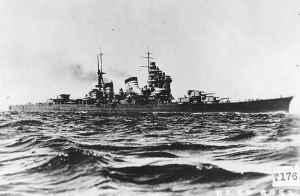
The last major surface action of the war takes place between the British and Japanese in the Malacca Straits. The Japanese cruiser Haguro is sunk.
1946 Nuremberg Tribunal: On day 131, Grand Admiral Erich Raeder testifies on his own behalf:
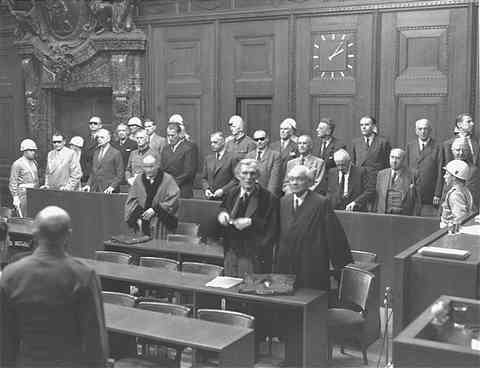
At first—as I intended to explain later—we had taken the new French ships as our model. The French Navy was developing at that time the Dunkerque class with eight 33-centimeter guns and a high speed, and we took that for our model, especially since, in Hitler's opinion—as you will hear later—there was no question of arming against England. We intended to reconstruct these two armored ships on this pattern as battleships with nine 28-centimeter guns and capable of a high speed. But then we heard that the King George class was being designed in England with 35.6-centimeter guns and, therefore, stronger than the French type; and so I said that we would in any case have to depart from the French type eventually and follow the English model which is now being built with 35-centimeter guns.
There is an error in the translation—namely, "oppose England." It says in my text that developments should follow the lines of British developments—in other words, that we should design vessels similar in type to the English ships. But they were out of date, too, shortly afterwards, because France was then building ships of the Richelieu class with 38-centimeter guns. Therefore, we decided that we too would build ships with 38-centimeter guns. That was how the Bismarck came to be built. The word "oppose" would have been quite senseless at a time when we intended to come to an agreement with Britain on terms under which we could in no way vie with her. [For the full testimony, Click here.]
1954 Death: Clemens Heinrich Krauss: a leading Austrian conductor:
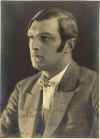
In 1933 and 1934, he gave up his Vienna positions, becoming director of the Berlin State Opera in 1935, after Erich Kleiber resigned in protest over Nazi rule. In 1933, he took over the preparations for the premieres of Strauss' Arabella when the conductor Fritz Busch (another non-Jewish anti-Nazi) left. After the War, Allied officials investigated his pro-Nazi activities, and because of them forbade him from appearing in public until 1947. They also found that he had frequently acted to assist a number of individual Jews escape the Third Reich machine.
Edited by Levi Bookin (Copy editor)
levi.bookin@gmail.com



Click to join 3rdReichStudies

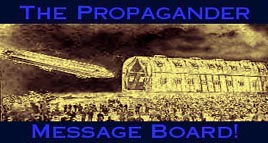

Disclaimer: This site includes diverse and controversial materials--such as excerpts from the writings of racists and anti-Semites--so that its readers can learn the nature and extent of hate and anti-Semitic discourse. It is our sincere belief that only the informed citizen can prevail over the ignorance of Racialist "thought." Far from approving these writings, this site condemns racism in all of its forms and manifestations.
Fair Use Notice: This site may contain copyrighted material the use of which has not always been specifically authorized by the copyright owner. We are making such material available in our efforts to advance understanding of historical, political, human rights, economic, democracy, scientific, environmental, and social justice issues, etc. We believe this constitutes a "fair use" of any such copyrighted material as provided for in section 107 of the US Copyright Law. In accordance with Title 17 U.S.C. Section 107, the material on this site is distributed without profit to those who have expressed a prior interest in receiving the included information for research and educational purposes. If you wish to use copyrighted material from this site for purposes of your own that go beyond 'fair use', you must obtain permission from the copyright owner.
Please Note: The list-owner and the moderator of 3rdReichStudies are not responsible for, and do not necessarily approve of, the random ads placed on our pages by our web server. They are the unfortunate price one pays for a 'free' website.